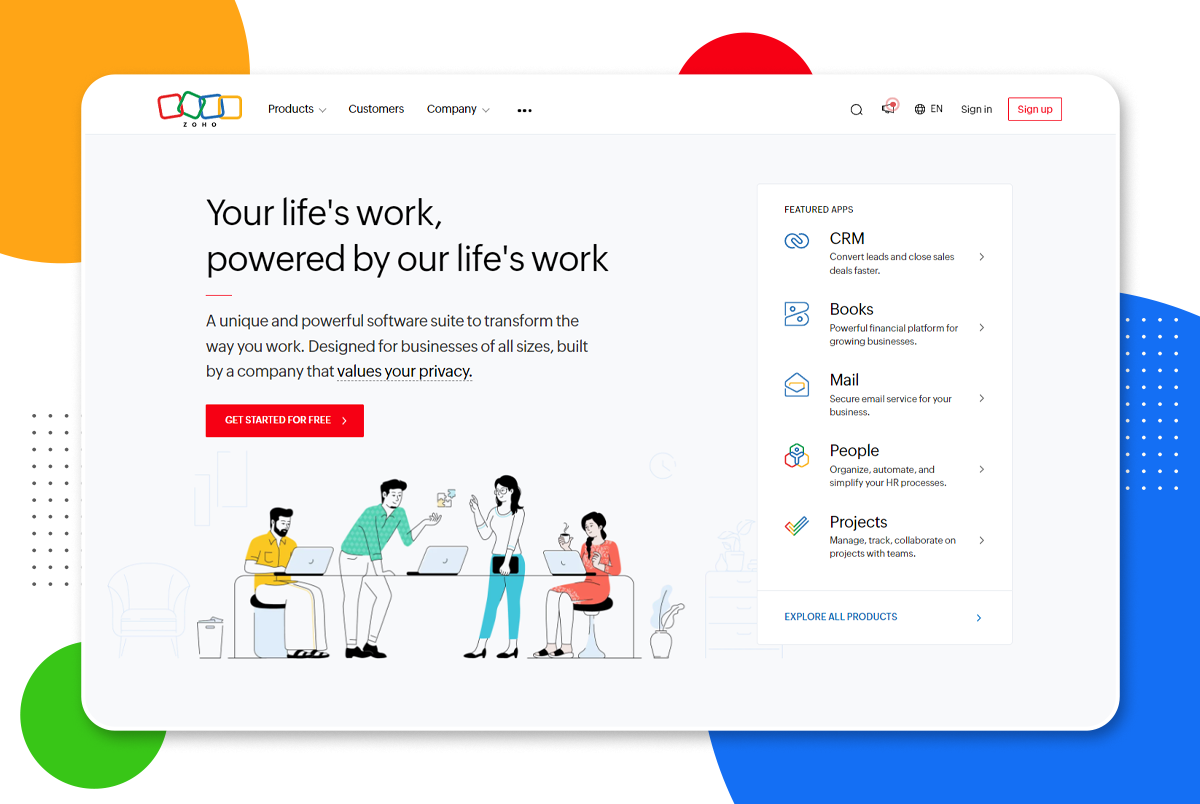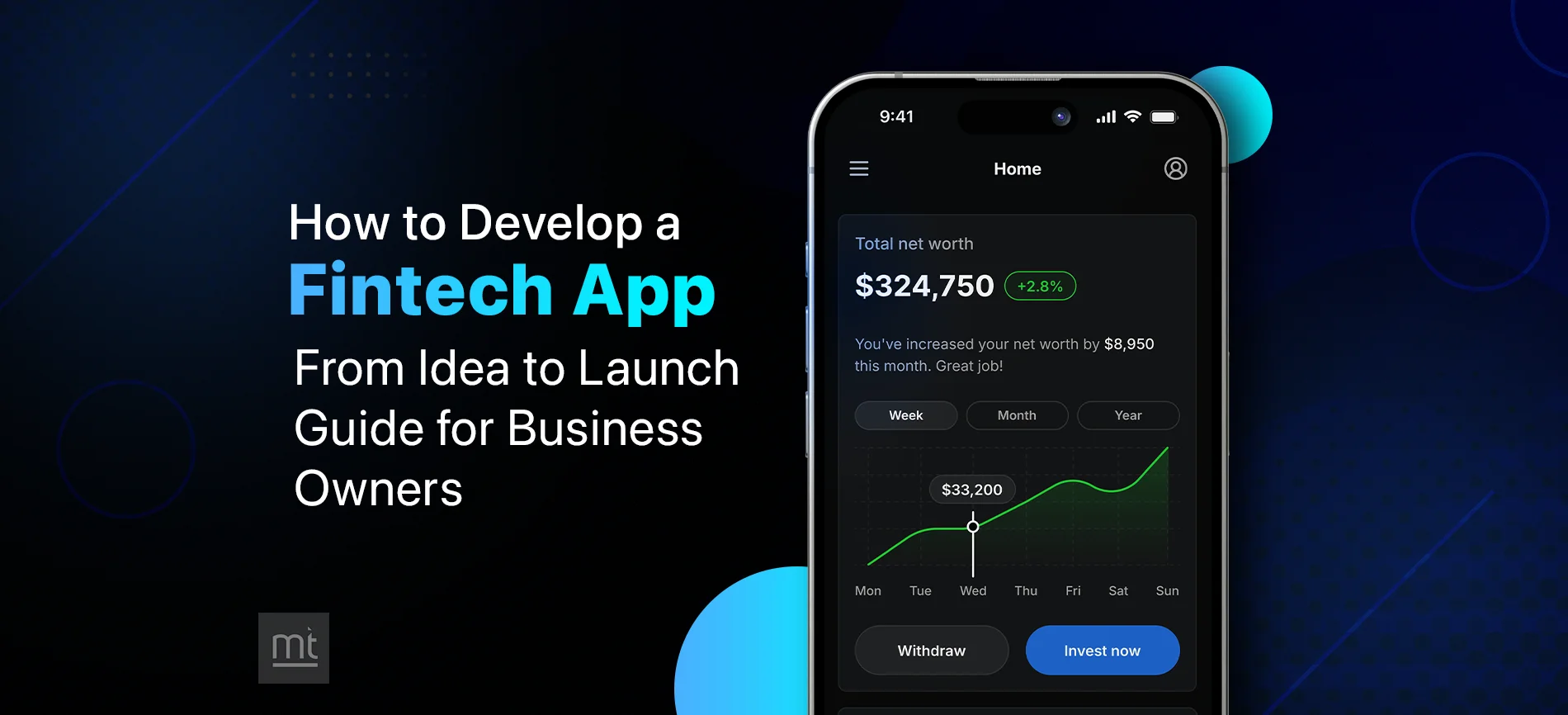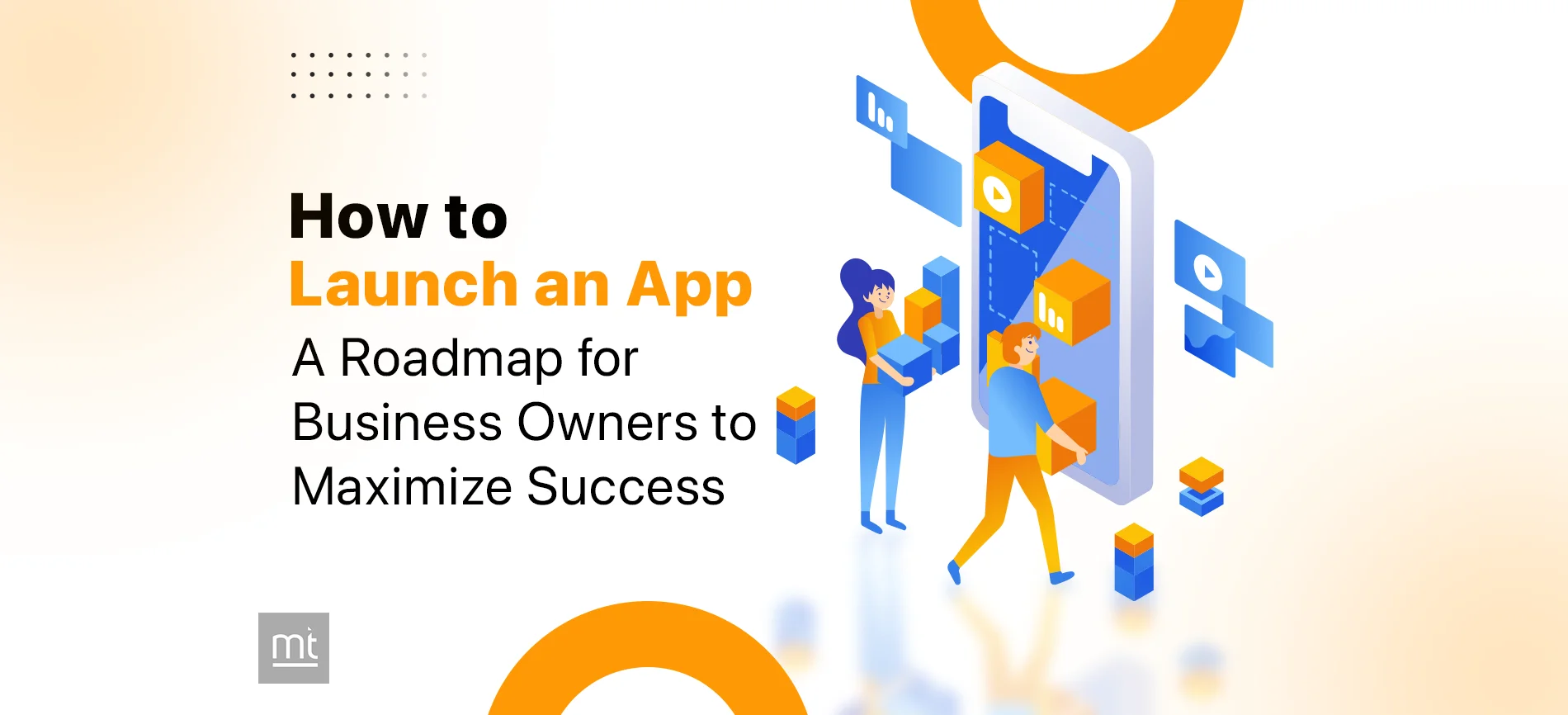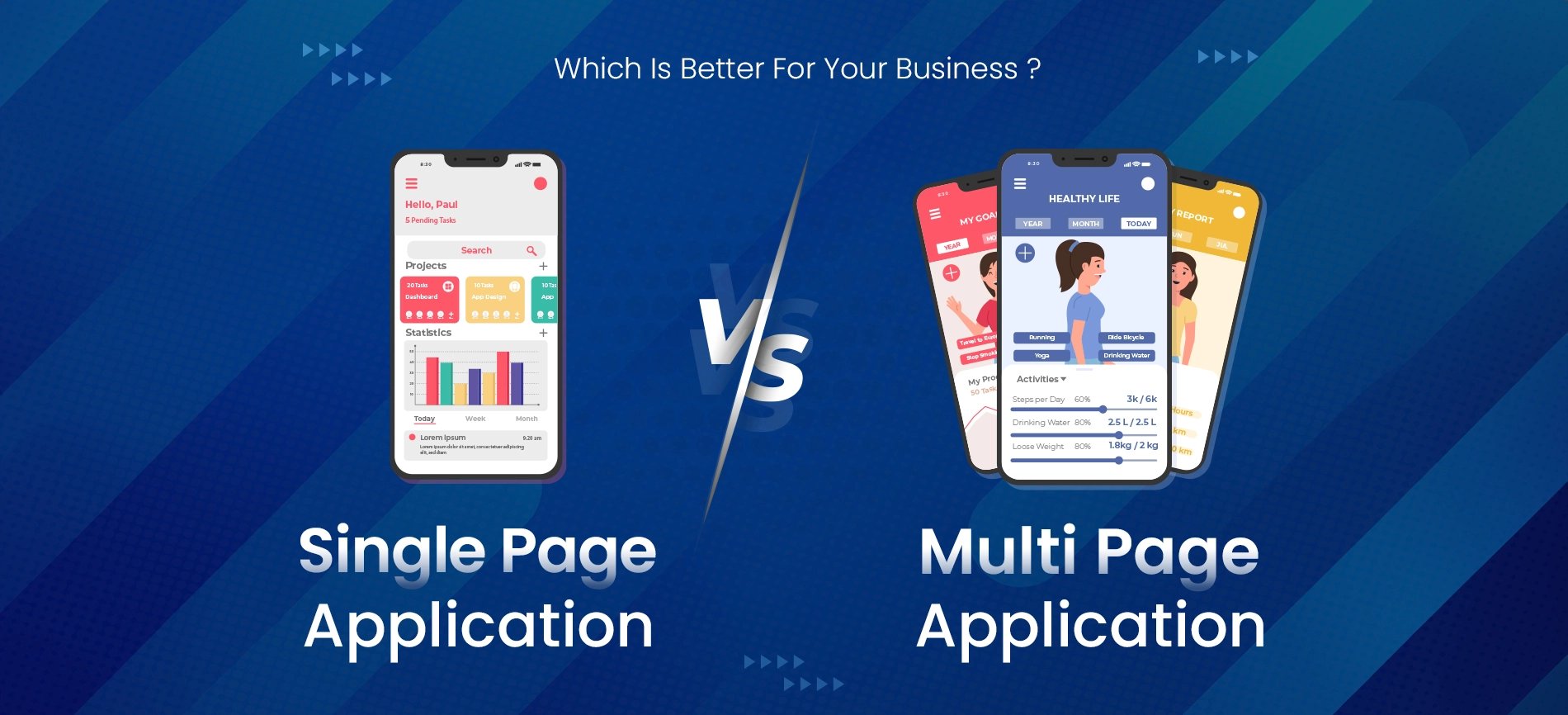Quick Summary
Discover the latest in low-code development platforms for 2024. This comprehensive guide explores top platforms, pricing, and key features, helping you stay ahead in the world of rapid application development.
Introduction - Low-Code Development Platforms
Low code is an increasingly popular approach to application development. Developers can quickly build and deploy applications while accessing a low-development environment.
But if you ask ten developers, you'll get eleven different low-score definitions.
So, if you are looking to hire an Android application developer, let's learn more about low code. Learn How low-code differs from no-code and how to evaluate whether it's a good fit for your future app development.
What is Low Code Development?
The low-code platform provides developers with a flexible visual environment to easily create graphical user interfaces with good app ideas. Low-cost systems allow developers to build and deliver applications faster, allowing businesses to scale, generate more revenue, and achieve above-average returns. These tools include a drag-and-drop model, a pre-designed model, a user-friendly interface, and more.
A low-level development framework provides a programming environment for developing software using a graphical user interface and configuration rather than using a graphical user interface and configuration to create software applications. Traditional hand-coded computer programming.
Amitha Pulijala, vice president of products, cloud platform services, CX, API, and AI at Vonage, believes low-cost and low-cost tools can help companies build software without a growing group.
IT users can use low-level design to incorporate building blocks into operations and applications. These core concepts allow IT departments to create business applications and interactions without the need for manual coding because they know how to solve problems with operations and commands.
Who is the Low Code Developer?
This simple method allows users to create software for a variety of purposes, such as creating mobile and business applications, without requiring custom coding or software development. Technical and government developers (non-professional developers) can use low-cost systems to create a variety of applications that meet business growth needs, simplify processes, and promote digital transformation. You can hire a developer by contacting an android app development firm.
What is a Low Code Development Platform?
Low Code Development Platform (LCDP) provides a development environment for developing software applications through a graphical user interface. Low-level code can make applications run better or require additional coding for special cases.
Low-code development platforms can enable the delivery of commercial applications by reducing traditional time. A good advantage is that many people can contribute to the development of the application, not just those with coding skills, and good management must follow the rules and regulations. LCDP also reduces the initial costs of installation, training, deployment, and maintenance.
The future of the low-code industry
Low-code must continue as a social and technology-wide phenomenon.
- Forecast by Gartner, Inc. The global technology market is expected to reach $ 26.9 billion by 2023 (19.6% growth by 2022).
- The global low-price market is expected to reach $65 billion in 2027 and $187 billion in2030. The annual growth rate from 2020 to 2030 is 31.1%.
- The low-tech construction industry is expected to continue with low-cost applications (LCAP) until 2023. For example, it will generate 5.8 billion in revenue in 2022, growing 30% since 2020.
At a predicted CAGR of 31.6%, the market for low code development platforms would increase from $13.89 billion in 2021 to $94.75 billion in 2028 as in graph below.
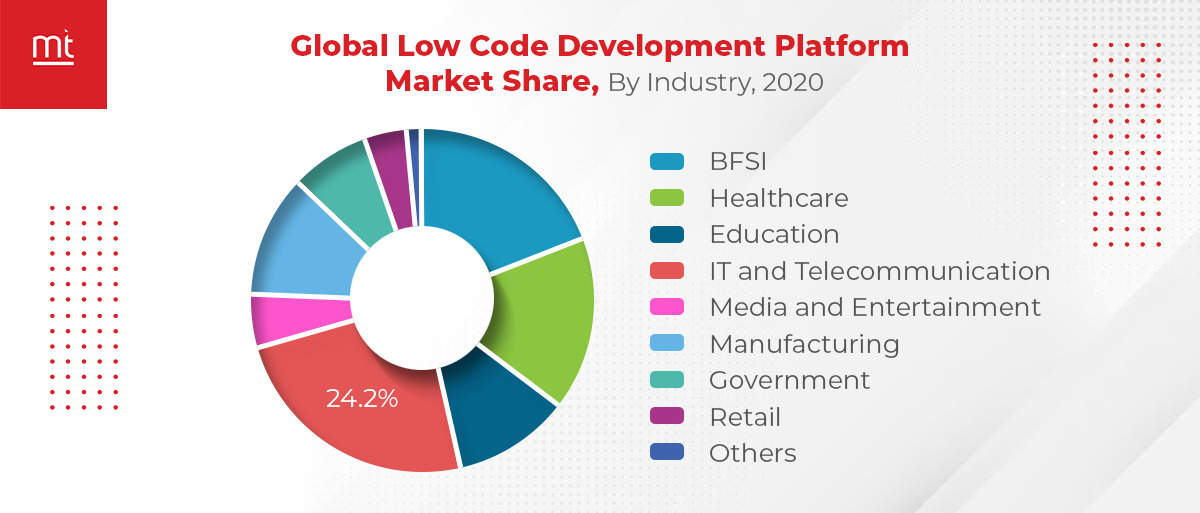
Types of Low-Code Development Platforms
Low-code development platforms have grown to be very popular in recent years. It offers more accessible and efficient ways to develop software applications. Hence, it is worth knowing the types of low-code development platforms. Each of these is developed as per different needs and skills. Here’s an overview of it:
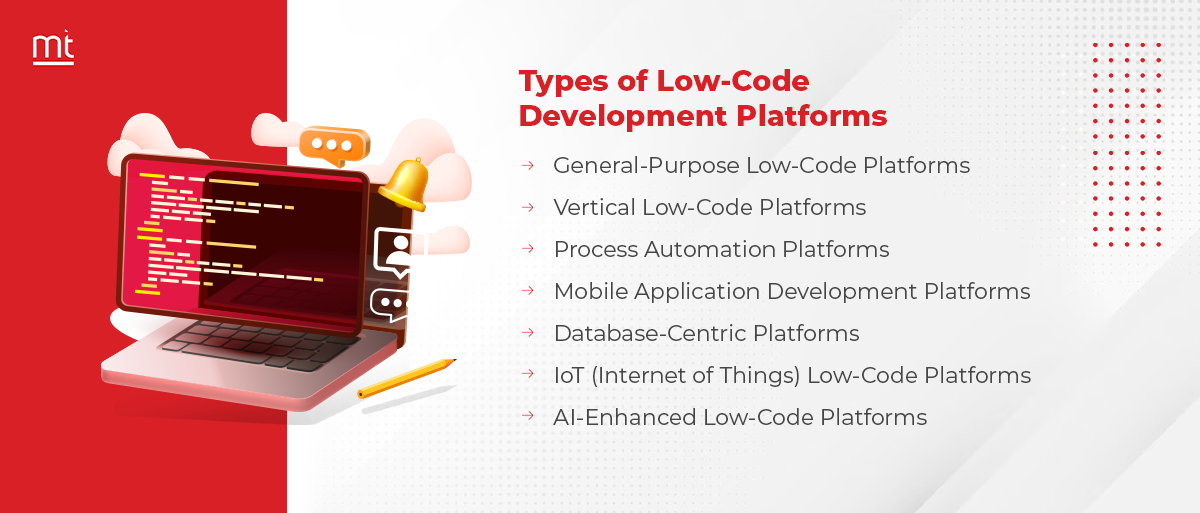
1. General-Purpose Low-Code Platforms:
These general-purpose platforms are designed to meet a wide range of application needs. They help with a visual environment and various pre-built components. Hence, this can further create applications across different industries and use cases. General-purpose low-code platforms are both versatile and easy to use. Hence, it can be used by experienced developers and citizen developers.
2. Vertical Low-Code Platforms:
Vertical low-code platforms are special for particular industries or niches. Hence, they will come with industry-specific templates, modules, and integrations. Moreover, it makes it easier to develop applications as per particular sectors.
3. Process Automation Platforms:
This type of platform is focused on automating and optimising processes. Hence, they are best for creating workflow automation, business process management (BPM), and task automation applications. They can also help organisations streamline their operations.
4. Mobile Application Development Platforms:
As the name says, these low-code platforms help in developing and optimising mobile applications. Hence, they have features for creating iOS and Android apps with ease. Mobile app development platforms often have features like responsive design and mobile-specific integrations. To use this, you will have to hire a mobile app developer.
5. Database-Centric Platforms:
These platforms are developed for database application development. Hence, they make it easier to create and manage database-driven applications. For example, customer relationship management (CRM) systems or data-driven web applications.
6. IoT (Internet of Things) Low-Code Platforms:
IoT low-code platforms are made for developing applications that get in connection with IoT devices. Hence, they often have IoT-specific components and integrations. These help in developing solutions for the Internet of Things space.
7. AI-Enhanced Low-Code Platforms:
Few low-code platforms have started to integrate artificial intelligence and machine learning capabilities. Moreover, they enable developers to create applications that leverage AI for tasks. It includes predictive analytics, natural language processing, and image recognition.
Hence, the choice of the platform will depend on the needs of your project and the skill level of the team. Each of these low-code platforms has its set of tools and features. Hire an iPhone app developer if you want something for iOS. Choose wisely for the best results and speed process.
Difference between Low-code & No-code development:
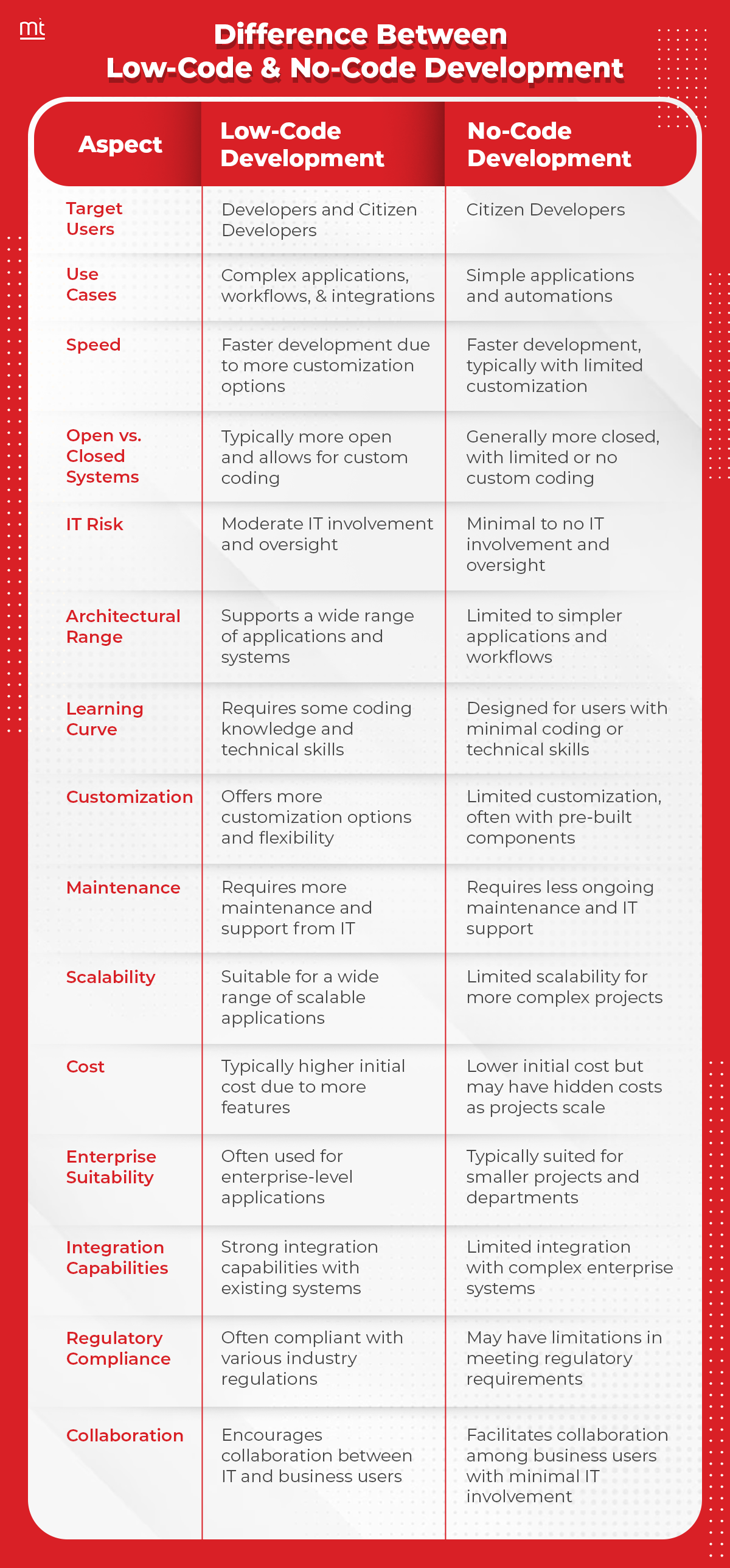
List of top 5 low code development platforms
Here is a list of the top 5 low-code development platforms. It also has key points about each one, including pricing, features, and their respective website URLs:
1. OutSystems:
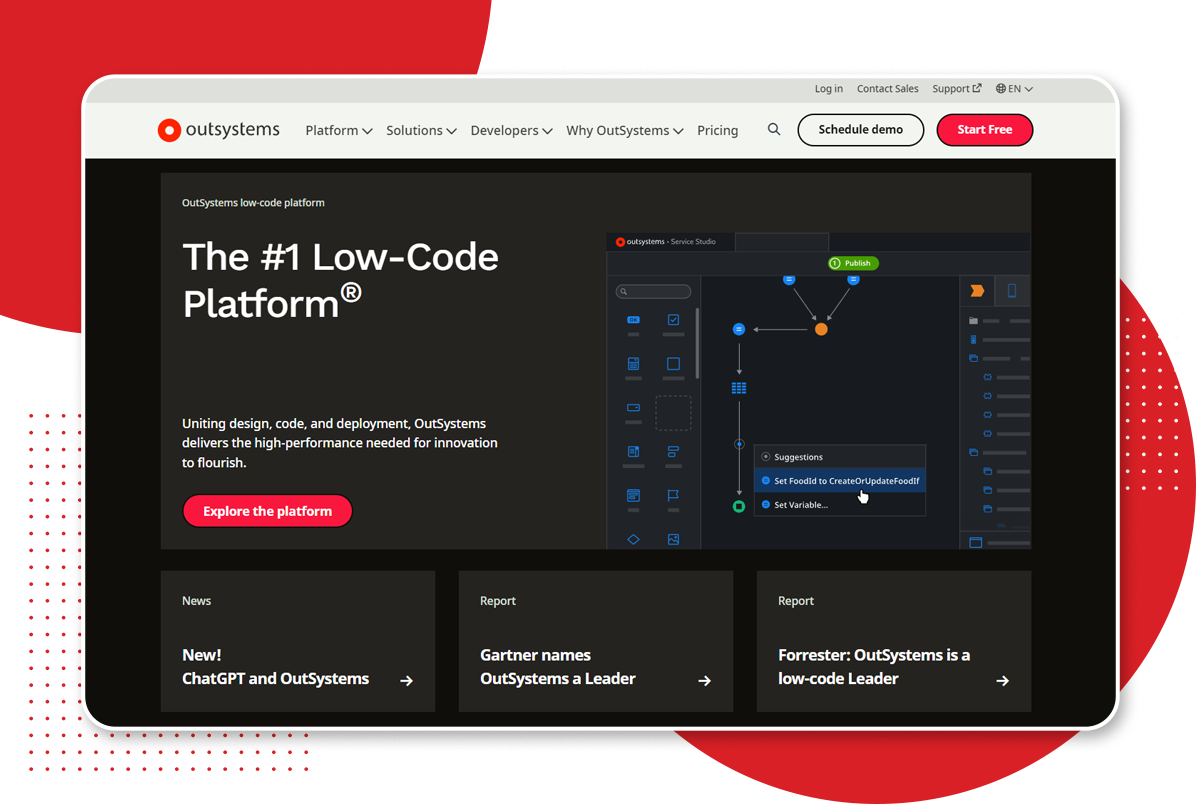
Pricing: OutSystems offers a free community edition. For enterprise solutions, pricing is available upon request.
Key Features: OutSystems provides an intuitive visual development environment, AI-driven app recommendations, and strong support for mobile and web application development.
2. Microsoft Power Apps:
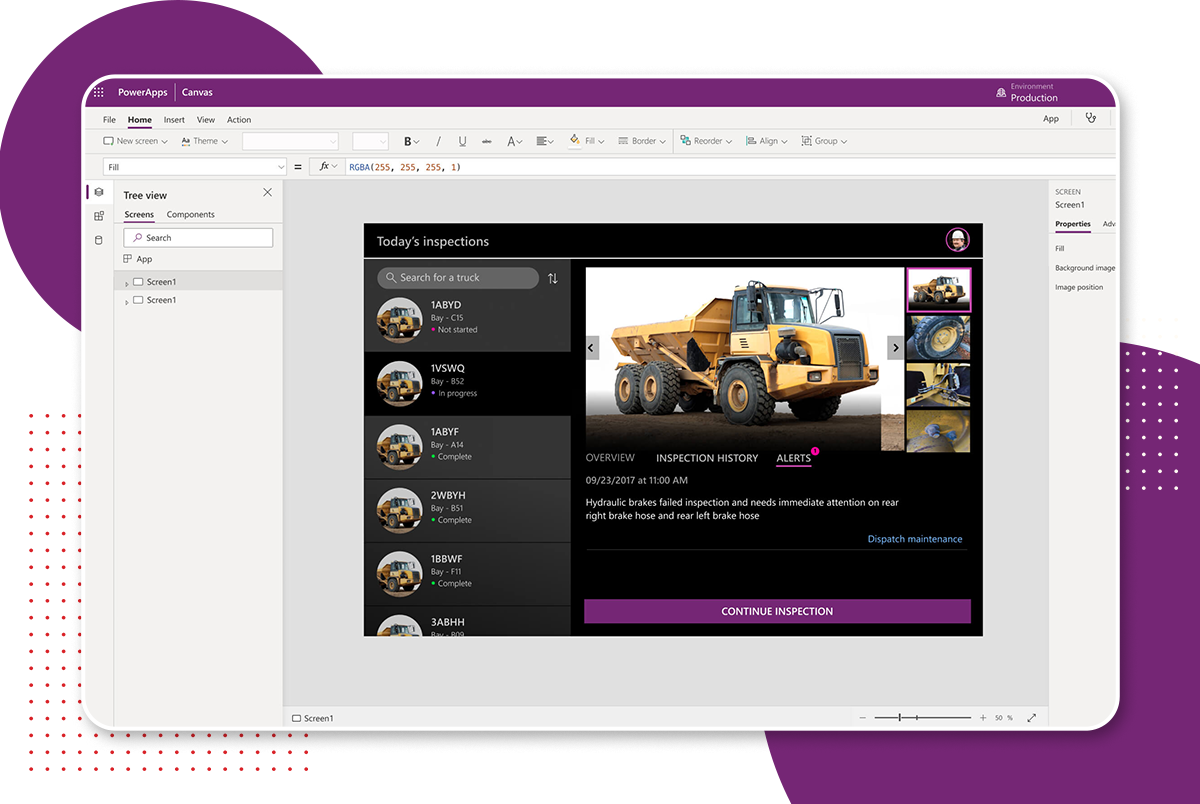
Pricing: Microsoft Power Apps offers both free and paid plans. Pricing varies based on usage and features.
Key Features: With seamless integration with Microsoft 365, Power Apps is known for its strong data connectors, AI capabilities, and the ability to build custom apps that integrate with other Microsoft services.
Website: Microsoft Power Apps
3. Appian: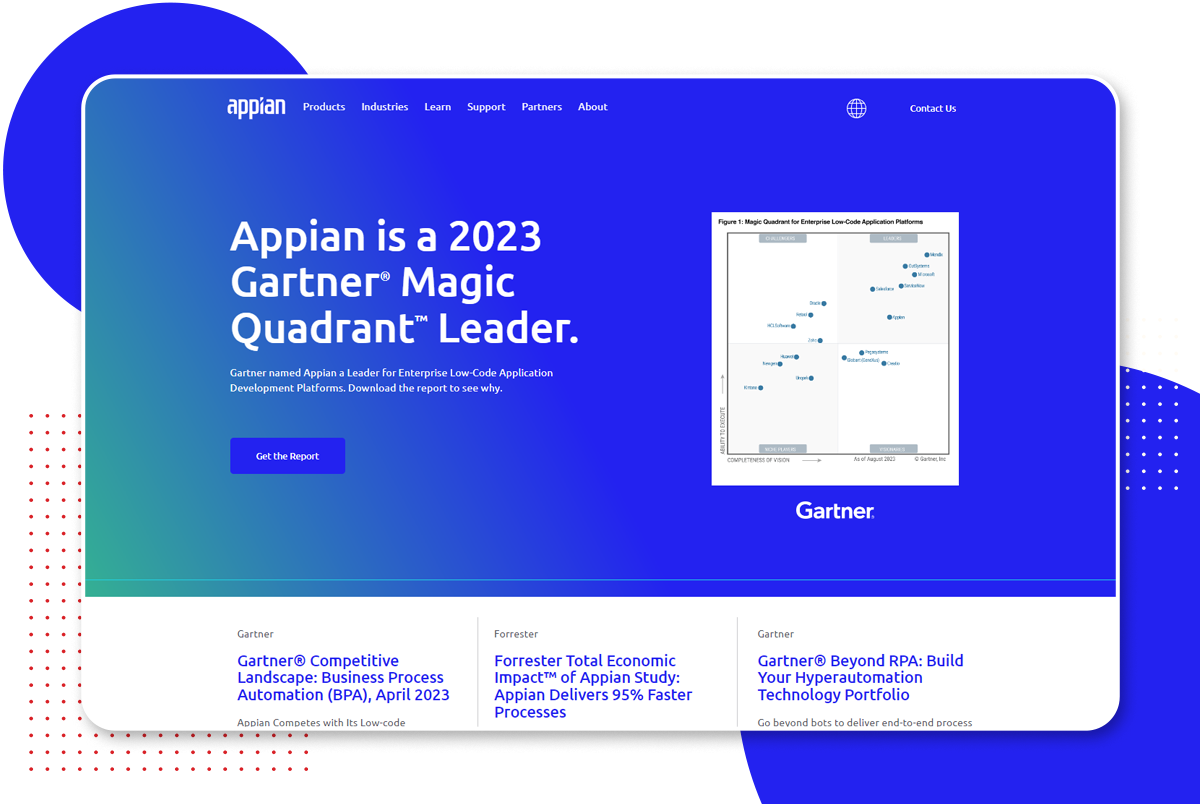
Pricing: Appian offers a free trial. Pricing details are available upon request.
Key Features: Appian stands out with its robust process automation and case management, low-code data integration, and the ability to create enterprise-grade applications quickly.
Website: Appian
4. Mendix: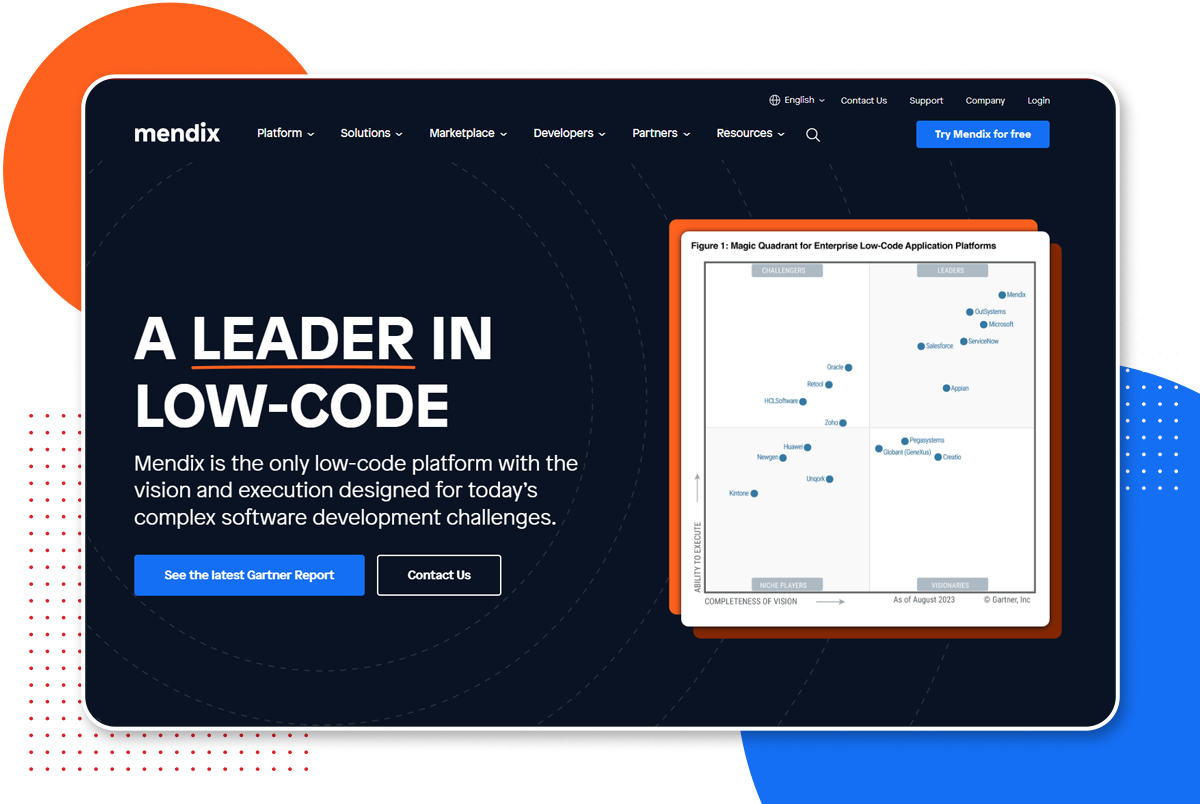
Pricing: Mendix provides a free trial. Pricing is based on your specific needs and is available upon request.
Key Features: Mendix excels in application collaboration, providing a visual development environment, and strong support for building and deploying applications at scale.
Website: Mendix
5. Zoho Creator:
Pricing: Zoho Creator offers a free plan and various paid plans starting at an affordable price per user per month.
Key Features: Zoho Creator is known for its ease of use, pre-built templates, and robust automation capabilities. It also integrates well with other Zoho products.
Website: Zoho Creator
How to start with Low Code Development?
The definition of process and data
The fundamental element of any application is the data process. To create a strategic plan, you must first create a plan that reflects business needs. It makes it easy to create programs that ensure processes run in the correct order and produce the desired results.
By putting the simulation process into practice and gaining new knowledge, you can determine the best course of action. It is easier to collect relevant and relevant information when you have a clear reporting process. Find The information you need to complete the process from start to finish.
Create user-friendly documentation
A seamless and satisfying user experience makes low-code easy to adopt. Drag and drop functionality enables the creation of user-friendly information based on methods and information that can be used to provide relevant information.
Thanks to its low-cost base, users can create a user-friendly management system and plan to use the device. Better application development can be achieved by creating ideal applications with all kinds of functions and functions.
Build Great Apps
Creating apps using low code is easy and requires little coding knowledge. Anyone can easily create an app using visual app development solutions without hiring a developer. As new software development approaches require little or no coding, some business process management (BPM) products are starting to use much lower-resolution solutions.
You can also change the code in your application to make it more difficult. Business process automation is one of the most important aspects of the process.
You can use pre-designed templates and visual design tools to automate repetitive tasks that do not require human intervention. It saves time and energy that employees can use more effectively for important work tasks.
Completing and testing the application
Before submitting your application, you must first test it. It allows technical problems or bugs to be detected early before the program is released to the public. Improper use may affect working processes and efficiency.
Low-code platforms provide a testing environment where developed programs can be examined and tested to evaluate their functionality and eliminate performance problems. Necessary changes can be made based on test results and user feedback before the application goes live.
Deploying Applications
Application deployment is very flexible in low-code systems. You can completely install, configure, and configure the operation in just a few clicks. The low-code platform provides instant updates, fixes, and upgrades for deployment.
What are the benefits of Low Code Development?
The mentioned benefits can help you understand why you choose Low Code Development:
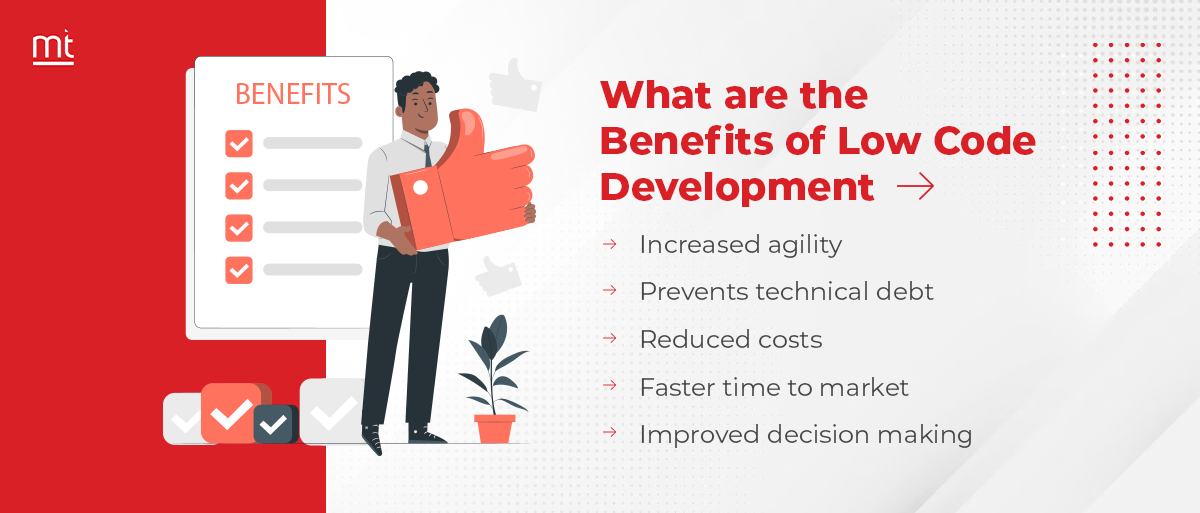
Increased agility
Helps anyone without substantial programming experience rapidly and easily design and launch new apps. Organisations may benefit from this by becoming more flexible and responsive to shifting business demands.
Prevents technical debt
Technical debt can actually be avoided with the aid of low-code platforms. They can lower the danger of using bad coding techniques or quick cuts, which frequently result in technological debt, by offering an organised and standardised environment for application development.
Reduced costs
Decreases the need for specialised programming resources, which can assist in bringing down the cost of development. Low-code programming can automate routine processes and cut costs even more. An improved user experience improves user experience by enabling company owners to design apps that are specifically targeted to the demands of their consumers.
Faster time to market
Lets businesses launch new goods and services more quickly by accelerating the app development process.
Improved decision making
Business owners may make better, data-driven decisions that can enhance overall business performance when they have access to real-time data and insights.
Features of Low Code Development
Here is a list of features for low-code development:
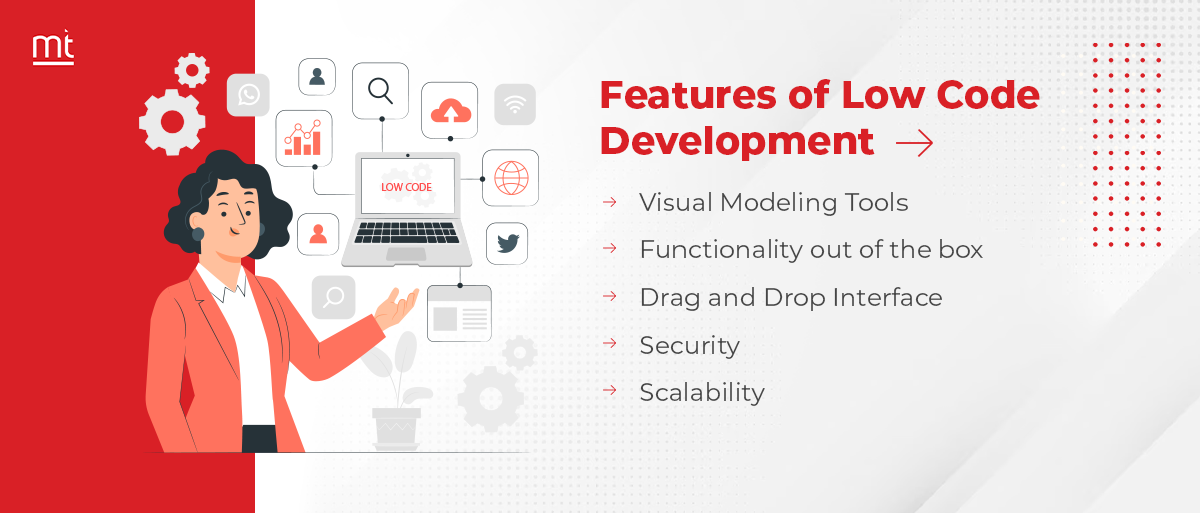
Visual Modeling Tools
Developing applications using visual modeling and modeling is faster than using code. Low-level systems with structured design can use design teams to present content in a format that everyone, from senior remote developers to business users, can understand, not just the business world.
Functionality out of the box
Low-end systems have OOTB (out-of-the-box) software, eliminating the need to build the basics of the program from scratch. For Example, some low-level systems provide data storage or customer applications such as service management or sales process management.
Drag and Drop Interface
Low code platforms have exceptional features of drag and drop. It is one of the most important and effective energies that increase productivity. Both technical and non-technical application developers benefit from the convenience of drag-and-drop tools throughout the development process.
Security
No matter how useful or user-friendly the device is, more is needed to secure it. Before using the low-level design process to protect the platform and application you are building, make sure it has adequate security.
Scalability
The scalability of the system is important for low-use applications. As your business continues to grow, it should develop applications that can manage the growth of your users. It must accommodate 20,000 people and 20,000 workers.
Conclusion
As we start the journey of software development in 2024, low-code development platforms are set to play a crucial role. Hence, this comprehensive guide might help you understand the diverse landscape of low-code platforms. OutSystems, Microsoft Power Apps, Appian, Mendix, and Zoho Creator are top picks that offer innovative solutions. They have features like visual development environments, AI integration, and seamless data connectivity. It is an important part of iOS app development services.
Moreover, the low-code revolution is making app development accessible to all. It allows businesses and individuals to create solutions more efficiently than ever before. Hence, as the technology continues to evolve, staying informed and leveraging these platforms is key. It helps in staying competitive and agile in the dynamic world of software development in 2024 and beyond.
About Author
Recent Blogs
Subscribe to Our Newsletter!
Join us to stay updated with our latest blog updates, marketing tips, service tips, trends, news and announcements!

